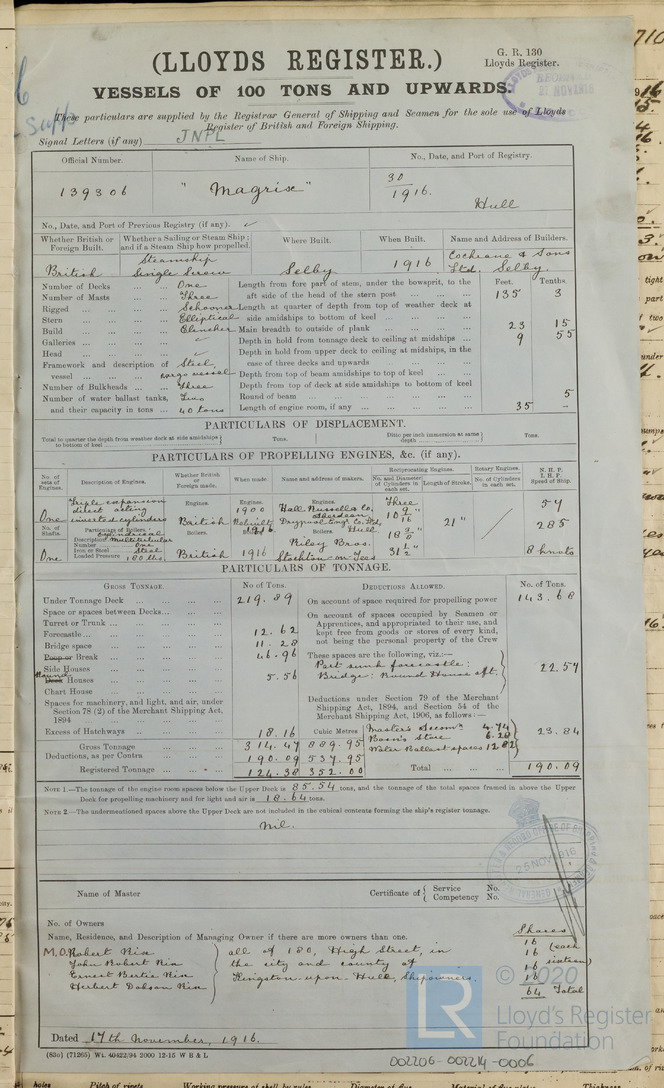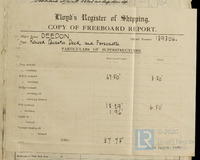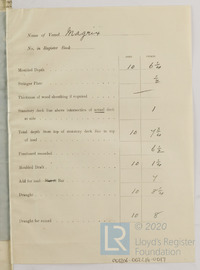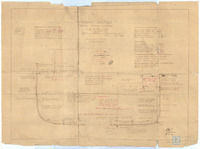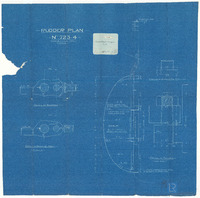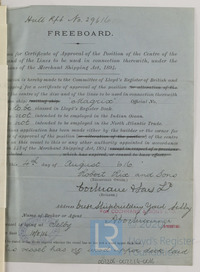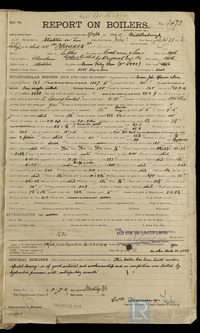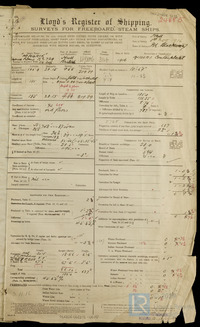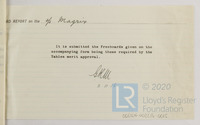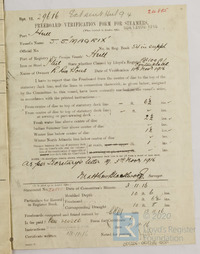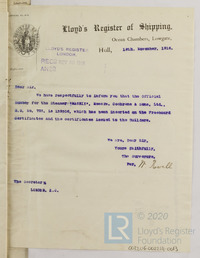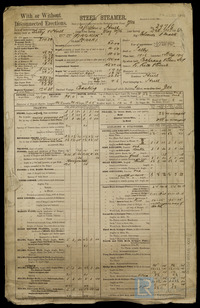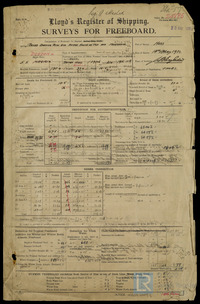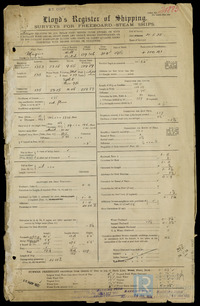- Related documents Related
- Full details Details
- Report document? Report?
Use the data export button to extract customised data sets from the Ship Plan and Survey Report Collection. Available in TSV and CSV formats.
Date recorded as the time of writing.
17/11/1916
The year in which a vessel’s construction is completed.
1916
The individual and/or organisation listed as having been responsible for constructing the vessel. This can/may be the same as the owner and/or manager.
Cochrane & Sons Ltd
The port or place in which the vessel’s construction took place, at the time of writing.
Selby
Official administrative title (often printed) of a record used by Lloyd’s Register or external organisations.
GR130 Vessels of 100 tons & upwards
Records that constitute Lloyd’s Register’s first official encounters with a specific vessel, e.g. a survey report.
N
Location where the document is written.
Hull
A vessel’s means of propulsion.
Steam
Is the steamer assisted by sail?
No
Type and configuration of the engine(s) supplied for a vessel.
Triple Expansion Direct Acting Inverted Cylinders
Date in which construction of a vessel’s engines were completed.
1916
Confirmation as to whether the vessel was equipped with refrigeration machinery to aid in the transport of frozen or chilled cargo/goods.
No
Does the vessel possess an auxiliary power source?
No
Is electric lighting fitted to the vessel?
No
The official record pronounced by the Committee
To be broken up
Vessel’s place of loss or disposal/last known recorded location.
Cork
Name of ship as recorded on the record
Magrix
The process of transferring a vessel to water, but not necessarily her completion.
14/09/1916
Unique identifier for a given ship, it is assigned by a builder.
723
Previously referred to as signal letters (c.19th C), radio call signs enable a ship to communicate and are assigned by the International Telecommunications Union (ITU).
JNPL
The port in which a vessel is registered or permanently based.
Hull
The individual and/or organisation listed
Robert Rise; John Robert Rise; Ernest Bertie Rise; Herbert Dobson Rise
Physical arrangement of a ship’s masts, sails and rigging.
Sr - Schooner
Predominant material(s) utilised in a vessel’s construction.
Steel
A ship’s total internal volume in ‘register tons’ (replaced by gross tonnage post 1982).
314
Location of construction for a vessel’s engines.
Aberdeen; Hull
Hall Russell & Co; Drypool Engineering Co Ltd
Is machinery fitted at the aft of the vessel?
No
Generally a smaller additional auxiliary boiler (often used while the vessel is at port).
No
Name of the Proving House responsible for the public testing and certification of a vessel’s anchors and/or chain cables.
No
Contextual information related to the reasons of the vessel’s loss or disposal.
Delivered to Haulbowline Industries Ltd for Breaking up at Cork
Physical extent of a record.
1
Report an issue with this document
Have you noticed missing or incorrect data or images for this document?
Please let us know and we will rectify the issue as soon as possible.

